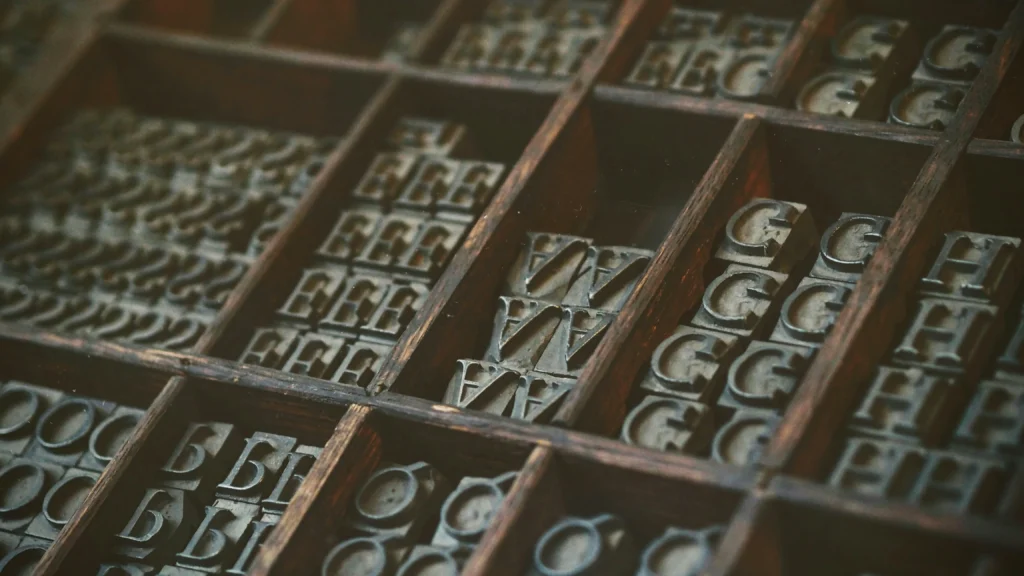
The 1970s was a decade defined by bold experimentation across various fields, from fashion to music to design. Typography during this period was no exception, with creative typography that pushed boundaries and broke conventions. Today, 70’s style fonts are making a remarkable comeback, influencing a new wave of modern design. From their origins in disco and counterculture to their resurgence in contemporary branding, 70’s fonts continue to captivate audiences with their distinctive flair. This article explores the rise and evolution of 70’s style fonts, their impact on design, and their relevance in today’s creative landscape.
The typography of the 1970s was deeply intertwined with the cultural movements of the era. The decade was marked by a sense of freedom and rebellion, with styles ranging from bold and funky to psychedelic and experimental. Graphic designers during this time began to explore new ways of expressing the era’s diverse and dynamic spirit through fonts.
One of the driving forces behind this experimentation was the rise of phototypesetting technology, which allowed designers to manipulate type in ways that weren’t previously possible. As a result, the typography of the 70s was marked by playful, fluid designs with an emphasis on bold, rounded forms and strong visual contrasts. It wasn’t just about readability; it was about making a statement.
The fonts of the 1970s are easily recognizable for their unique design elements. Below are some of the defining features that make 70’s fonts stand out:
These features combined to create a font style that was both distinctive and expressive, making it a perfect fit for the energetic, experimental 1970s.
The resurgence of 70’s style fonts in contemporary design is driven by a number of factors. Perhaps the most significant reason is the desire for nostalgia. Modern consumers are increasingly drawn to vintage aesthetics that remind them of a simpler time. 70’s fonts, with their bold forms and playful characteristics, offer a nostalgic trip back to the carefree spirit of the 70s.
Additionally, as design trends evolve in cycles, what was once old becomes new again. After years of minimalist design trends, designers are now seeking ways to infuse more personality and character into their work. 70’s fonts, with their vibrant and bold appearances, are an excellent way to add individuality to any project. Digital platforms also make it easier to access and manipulate vintage fonts, leading to their widespread use in modern creative work.
Several iconic fonts from the 1970s have made a comeback in modern design. These fonts are favored for their boldness and retro aesthetic, and they can be found in a wide range of applications, from branding to advertising. Some of the most popular 70’s fonts making an impact today include:
A prime example of 70’s fonts in action can be seen in the rebranding efforts of major companies. Fanta, for instance, updated its logo in 2021 by incorporating rounded, retro-inspired letterforms, capturing the bold and playful essence of 70’s typography. This nod to vintage design helped Fanta connect with a younger demographic, while evoking nostalgia in older consumers.
Other companies are also turning to 70’s style fonts to infuse their branding with personality and fun. By leaning into the aesthetic of the 70s, brands can distinguish themselves in a crowded marketplace, tapping into the emotional appeal of retro design.
The influence of 70’s fonts extends beyond print, with digital media also embracing this retro style. Web designers and social media managers often use these fonts for headers, promotional graphics, and posters, where their bold and distinctive qualities can capture attention in a crowded digital landscape.
The music industry, in particular, has seen a resurgence of 70’s fonts, with artists and bands using retro typography for album covers, posters, and merchandise. The revival of vinyl records has also contributed to the ongoing popularity of vintage-inspired design, giving rise to a new generation of fans who appreciate the aesthetics of the past.
If you’re considering incorporating 70’s style fonts into your own projects, here are a few tips to help you make the most of these bold and retro typefaces:
The comeback of 70’s style fonts proves that design is cyclical, and what was once old is always new again. These fonts—bold, quirky, and expressive—serve as a powerful tool for today’s designers looking to make an impact. Whether you’re creating a brand identity, working on digital media projects, or simply exploring retro design, 70’s fonts offer endless possibilities for creativity.
With their timeless appeal, 70’s fonts remain relevant in today’s design landscape, continuing to inspire a new generation of creatives. By embracing these bold and vibrant fonts, designers can connect with the past while pushing forward into the future of typography.